Flash photography for beginners. 4 tutorials with tips to get started.
Written by: Rebecca Ahremark

In this article, we will guide you through the basics of getting started with the Profoto A1X to create natural looking images with flash. We’ll take you all the way through the basics of how to set your camera and flash, to create soft and hard light, how to direct it for different purposes and finally how to use gels in a creative way.
We asked wedding and portrait photographer Paul Von Rieter to help us demonstrate this in four short video tutorials using the Profoto A1X.
Tutorial tip 1
How to get started with flash
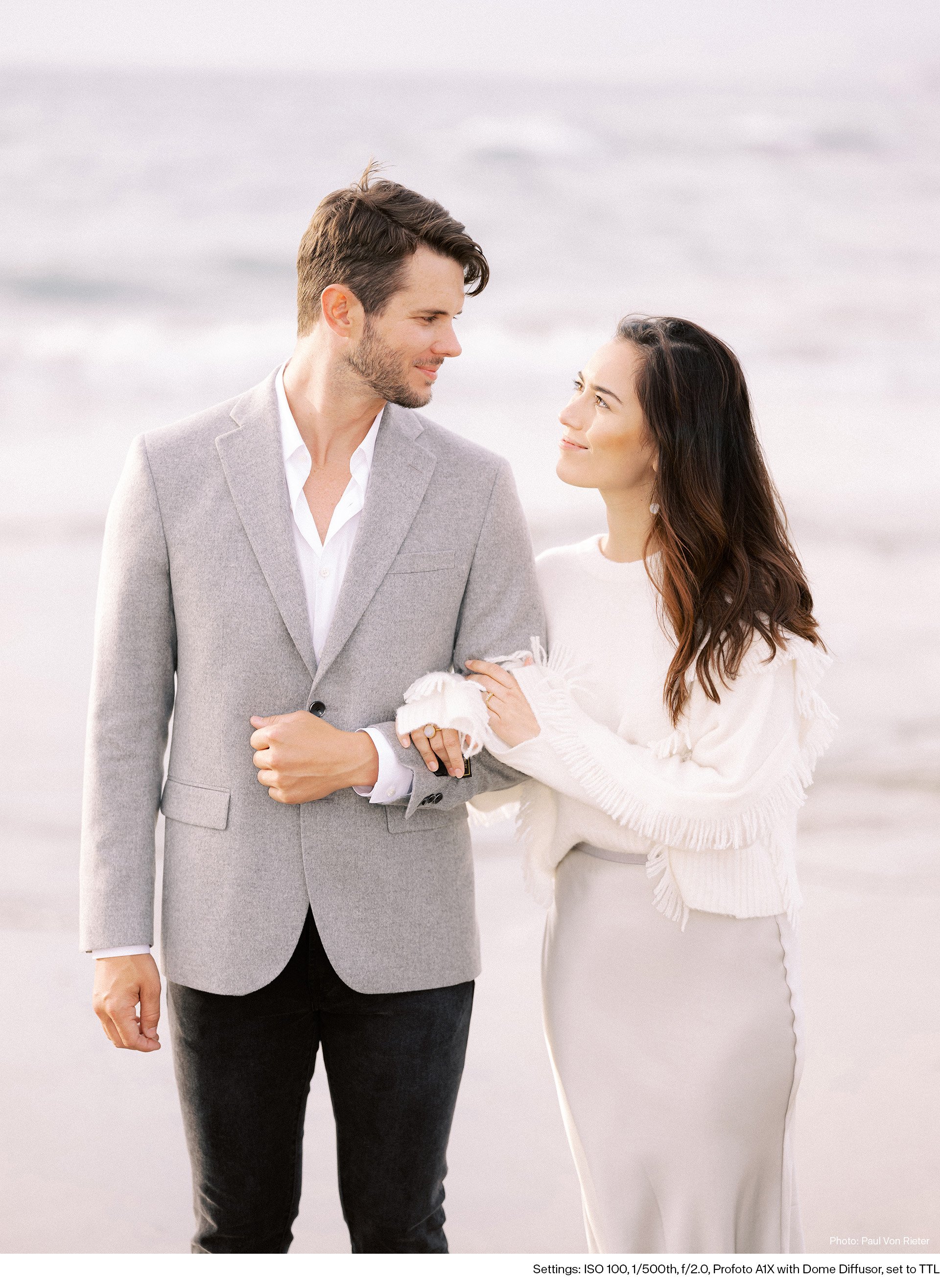
Step 1. Always set your camera first
Start by deciding what depth of field you want in your image by setting your aperture. This is your creative decision and shouldn’t be changed unless you actually want to change the depth of field in the image. For the image above, Paul wanted a shallow depth of field, so he chose an aperture of 2.0.
To avoid a typical “flashy look” (where the background is dark, and the subject is heavily lit by flash) you can let more of the ambient light into the picture by changing the shutter speed. In the image above, Paul exposed for the background to make sure that both the sky and water were well exposed and chose a shutter speed of 1/500th of a second.
If you want to bring more light into the image but end up getting a shutter speed that is too slow, it will create motion blur. In this case, you can increase your ISO instead to work at a faster shutter speed.
When you’ve decided on all your camera settings, it’s time to introduce flash.

Step 2. Introducing flash / choosing between TTL and manual
When should you use TTL and when should you use manual mode? Once again, this is up to you as the photographer, but we’ll give you some tips.
TTL/Auto Mode
TTL will communicate with the camera and automatically change the flash power level depending on the surrounding ambient light. This will help you get an even flash exposure no matter how the subject moves.
Perfect for:
- When the subject is moving around: at events, on a busy wedding dance floor or when you want to capture a shot of a child running around, etc.
- When you want automatic settings and don’t want to worry about finding the right flash power
Manual mode
In manual mode, the flash power stays in the power setting that you’ve decided. Manual mode will put you, the photographer, in control, just like manual mode on your camera.
Perfect for:
- When you don’t need to adjust for ambient light that changes constantly
- When the distance between the subject and the flash is constant
- The photographer who wants to be in full control of the settings
Tips:
- If you want more or less flash light, you can adjust this using flash compensation in your camera (TTL mode) or by spinning the wheel on the Profoto A1X (manual mode)
When you’ve exposed for the background using the settings in your camera and set your flash to the proper settings, it’s time to start shooting!
Tutorial tip 2
How to create soft and hard light
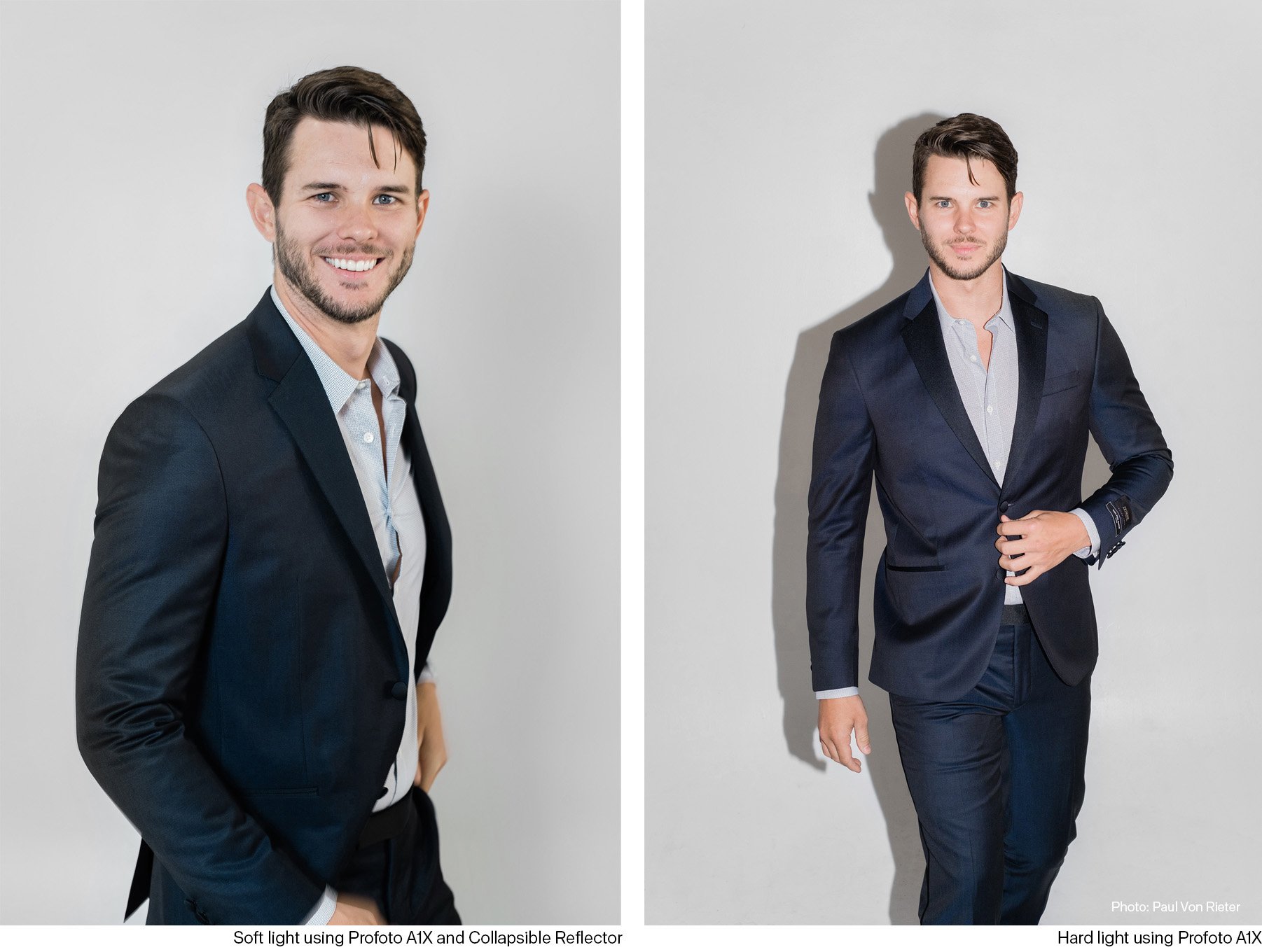
The short explanation
Soft light is the term for when the shadow edges (the gradient between dark and bright) are wide. The softer the light, the less sharp the shadows will seem. Hard light is the opposite, with crisp and sharp shadows. A larger light source creates soft light and a small light source creates hard light.
How to create soft light with the Profoto A1X
Creating soft light with the Profoto A1X can be done in several ways. An easy option is to bounce it into a white wall or ceiling, which will reflect the light. But sometimes there is nothing to bounce into: the ceiling might be black or perhaps you’re shooting outside. In those situations, you can use some of the products below instead.
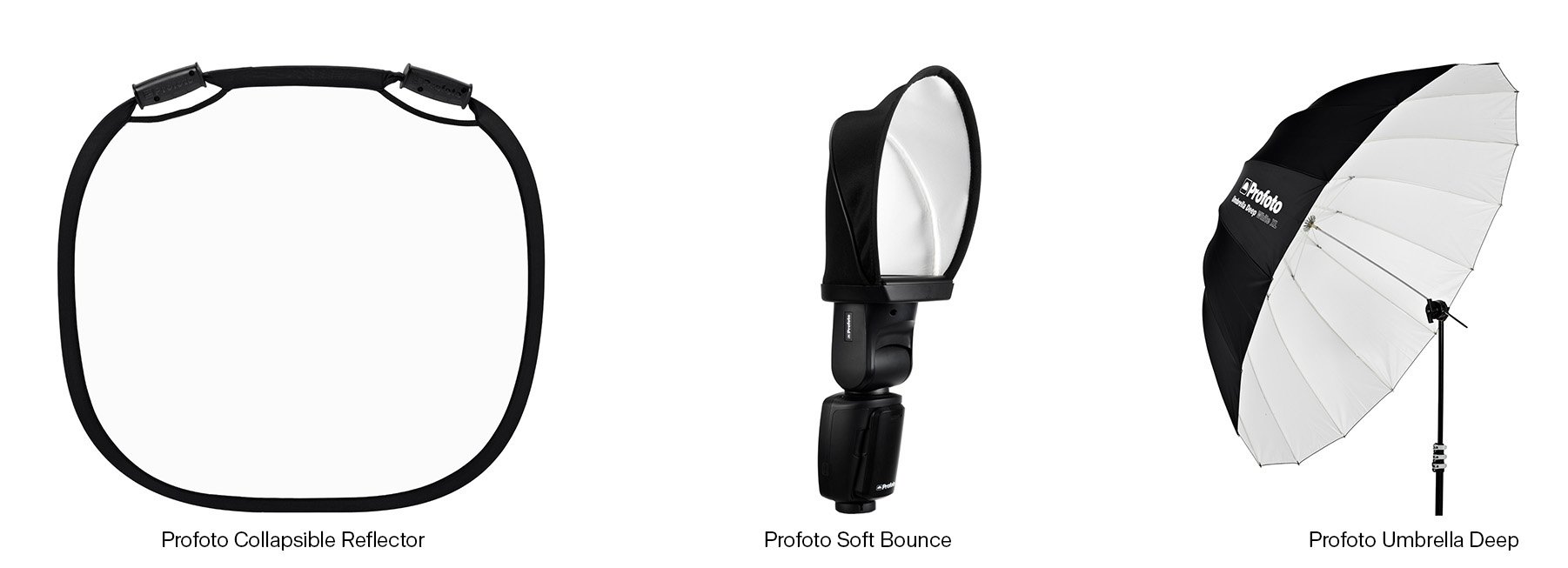
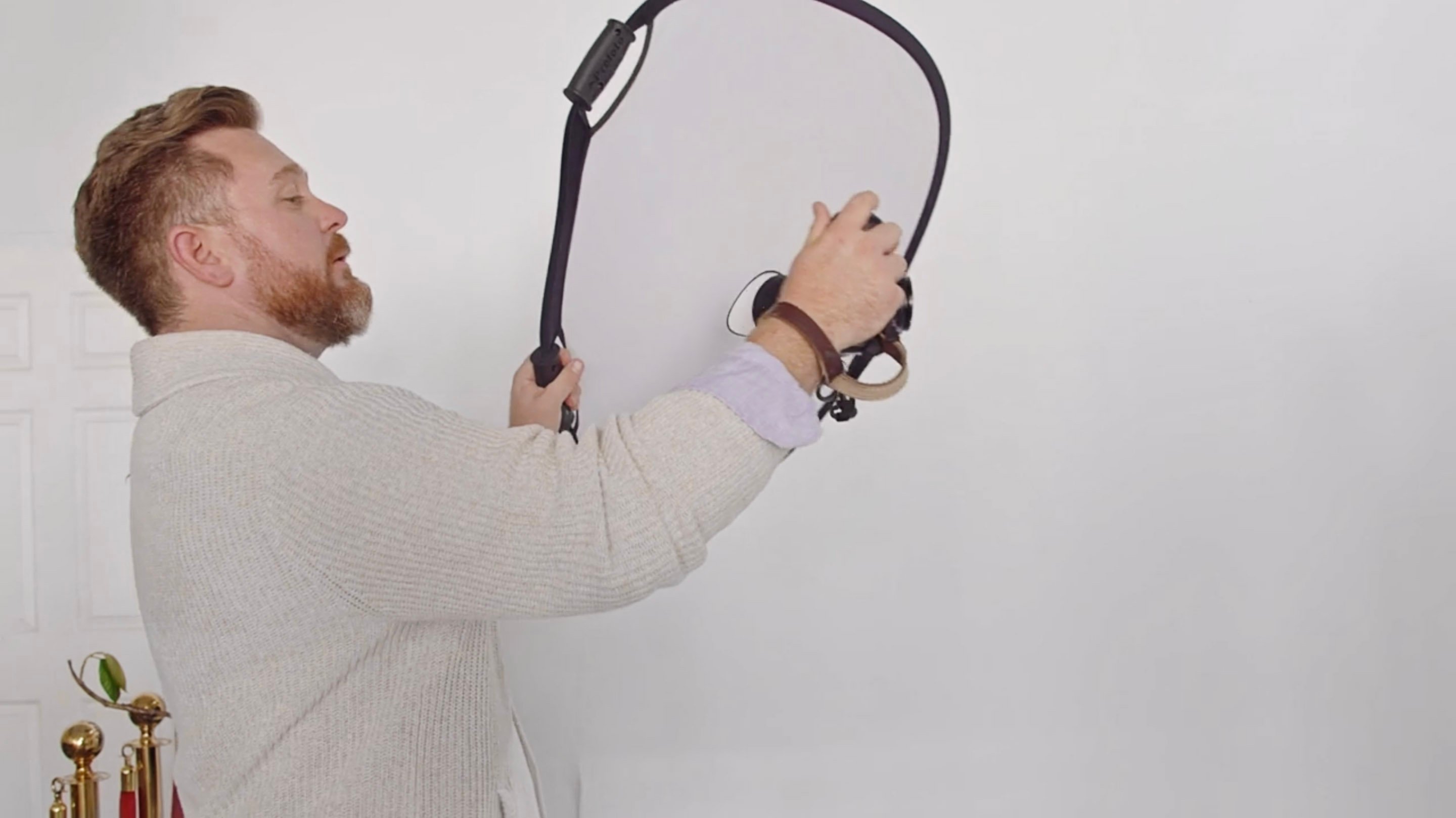
How to create hard light with the Profoto A1X
Maybe you’ve noticed that shooting outside in direct sunlight creates hard and crisp shadows? The reason for this is that the sun is a small light source, seen from our distance.
If you want to mimic the look you get from sunlight, using a small flash straight on your subject will create hard and crisp shadows, similar to those you get from the sun.
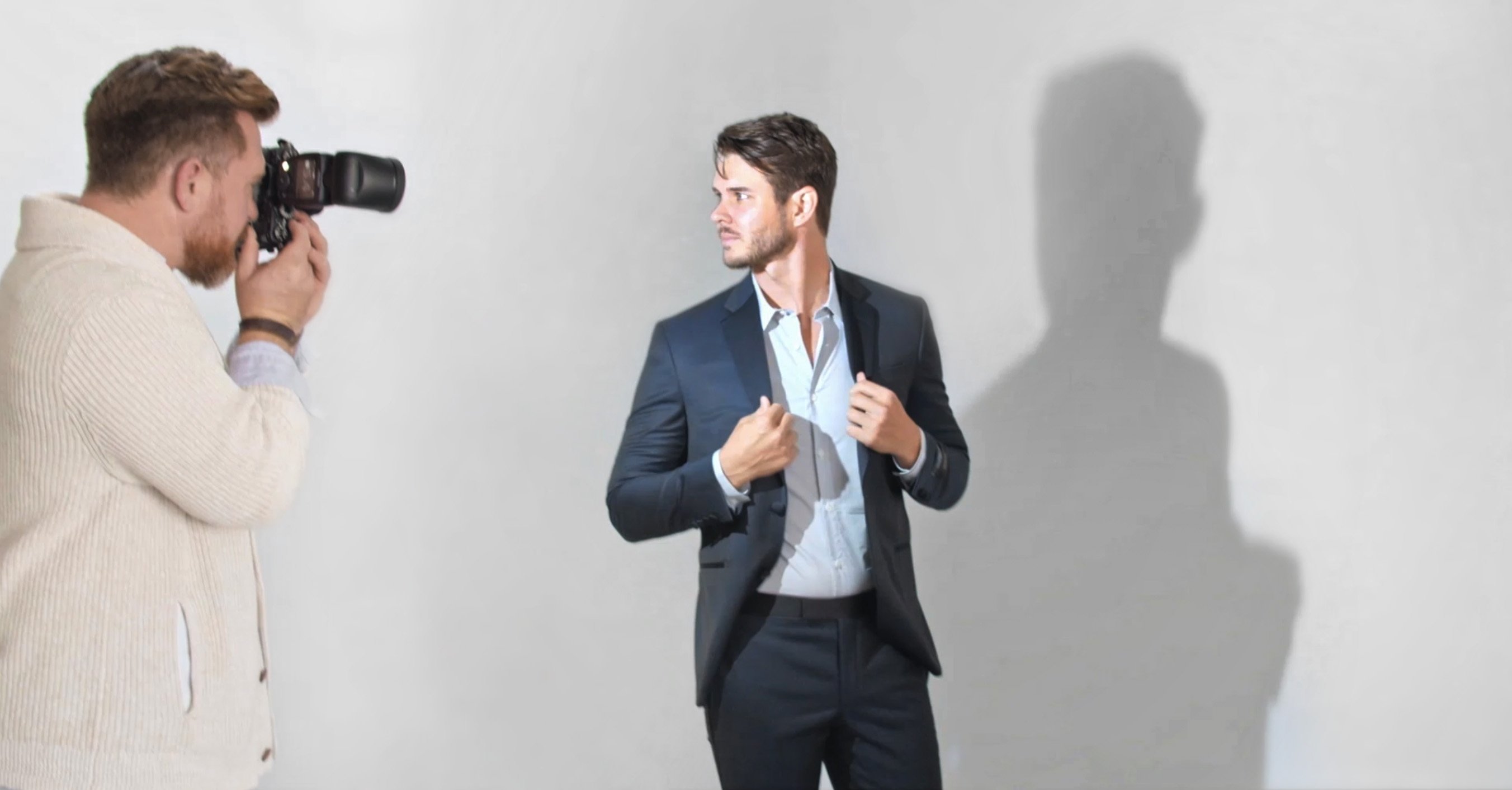
Tutorial tip 3
How to direct on-camera flash
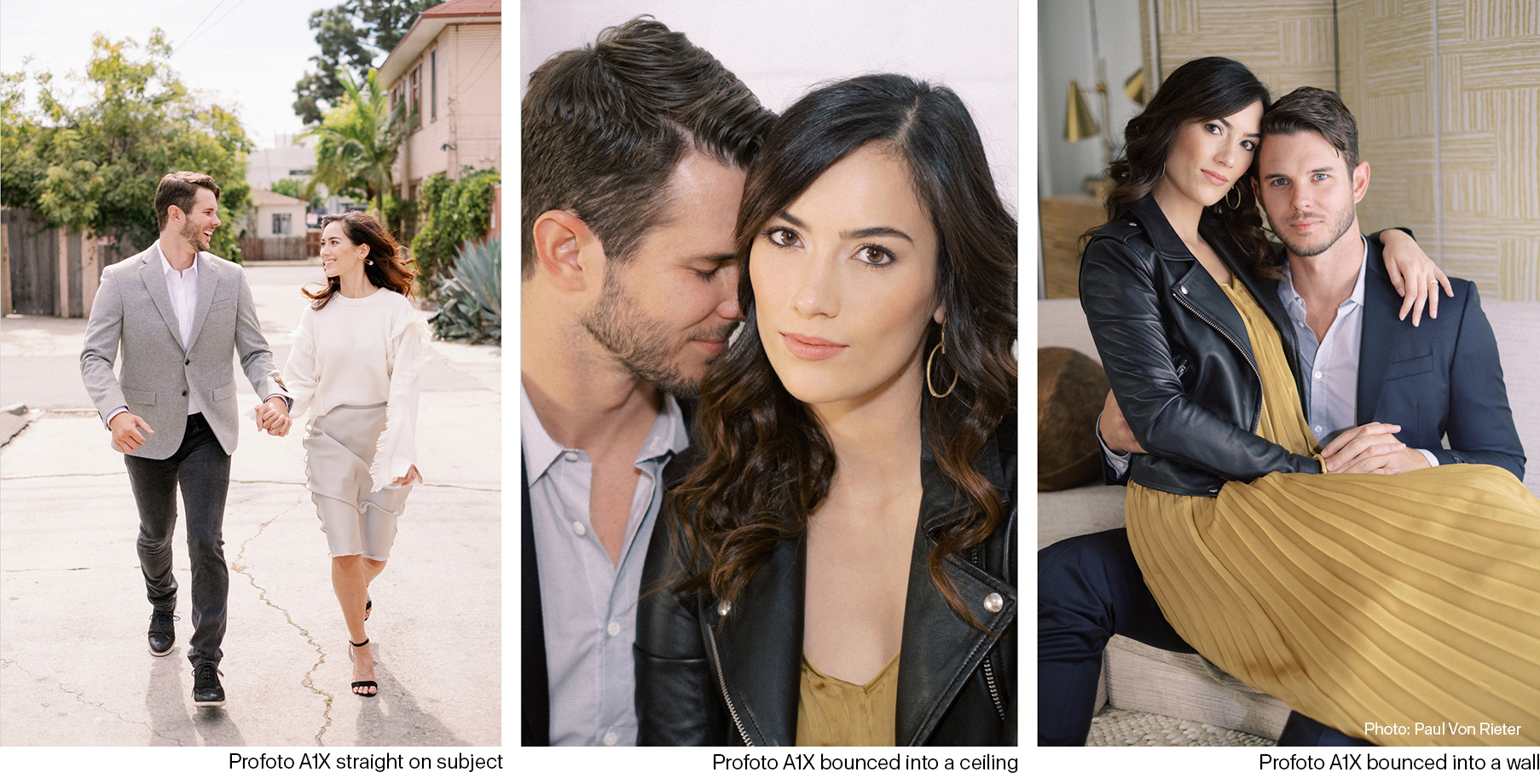
The Profoto A1X rotates 360 degrees, meaning that you can direct it in several ways. In the video above, Paul demonstrates three different ways you can direct the Profoto A1X to create different looks depending on the situation.
Flash straight on subject
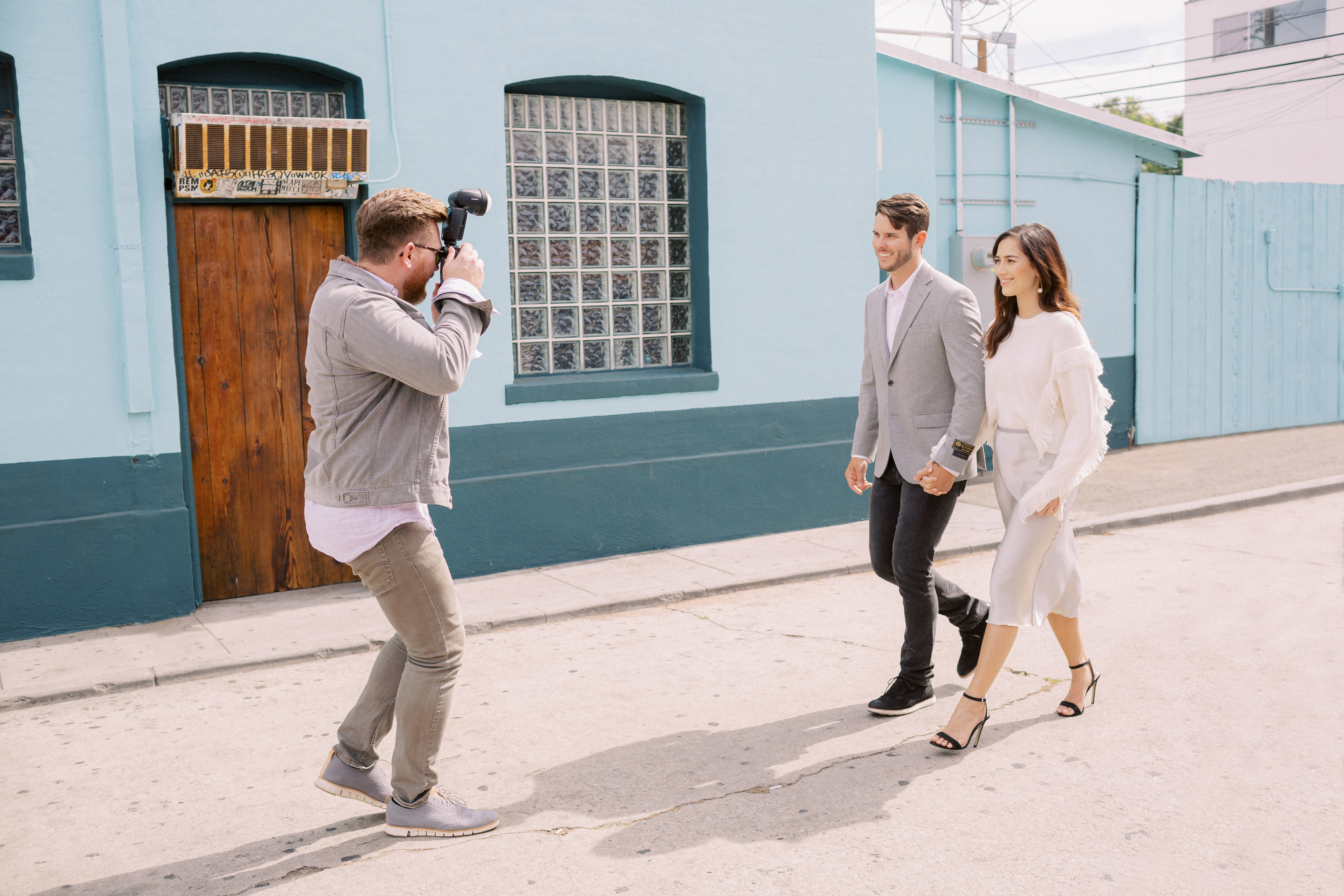
Perfect for:
- Quick and easy portraits
- People in movement
- Fill light when you’re outside
Tips
- Use TTL for automatic flash exposure when the subject is moving
Flash into a ceiling

Perfect for:
- Creating a softer light (because the light source becomes larger)
- When the location has a white ceiling (other colors may create unwanted color casts)
Tips
- Add the Bounce Card on the Profoto A1X to get a catchlight in the model’s eyes
- Make sure that the flash is actually hitting the ceiling so the light will bounce back
- If it’s too high up, it’s better to change the direction of your flash
Flash into a wall

Perfect for:
- Creating a softer light, when the ceiling is a color other than white
- Creating side light and some direction of the shadows
Tips
- Make sure that the flash is actually hitting the wall. If it’s too far away, it’s better to change the position of the flash
- A Profoto Collapsible Reflector can also be used to create side light, if no wall is nearby
Tutorial tip 4
How to be creative with gels
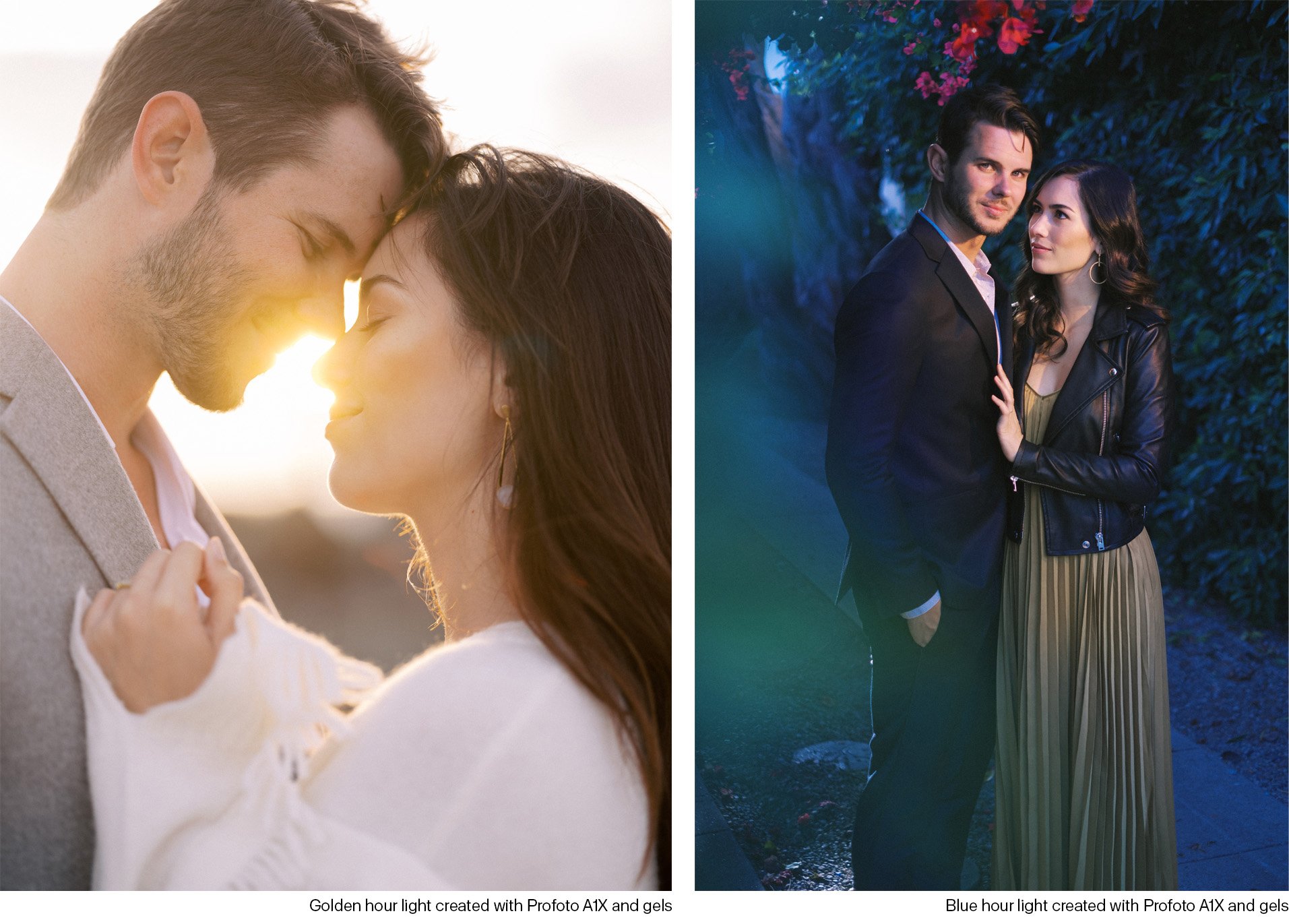
Congratulations, you have now learned how to set your camera and flash, how to create soft and hard light, and how to direct your flash in three different ways.
So, let’s get creative!
As a natural-light photographer, you probably love the images you can create in golden hour and blue hour light. And no wonder, the light it provides is amazing. But as you probably know, natural light is unpredictable and can’t be controlled. With flash, you can recreate this look, no matter what time of day it is.
Creating golden hour light
The warm, orange light that appears right before the sun is about to set.
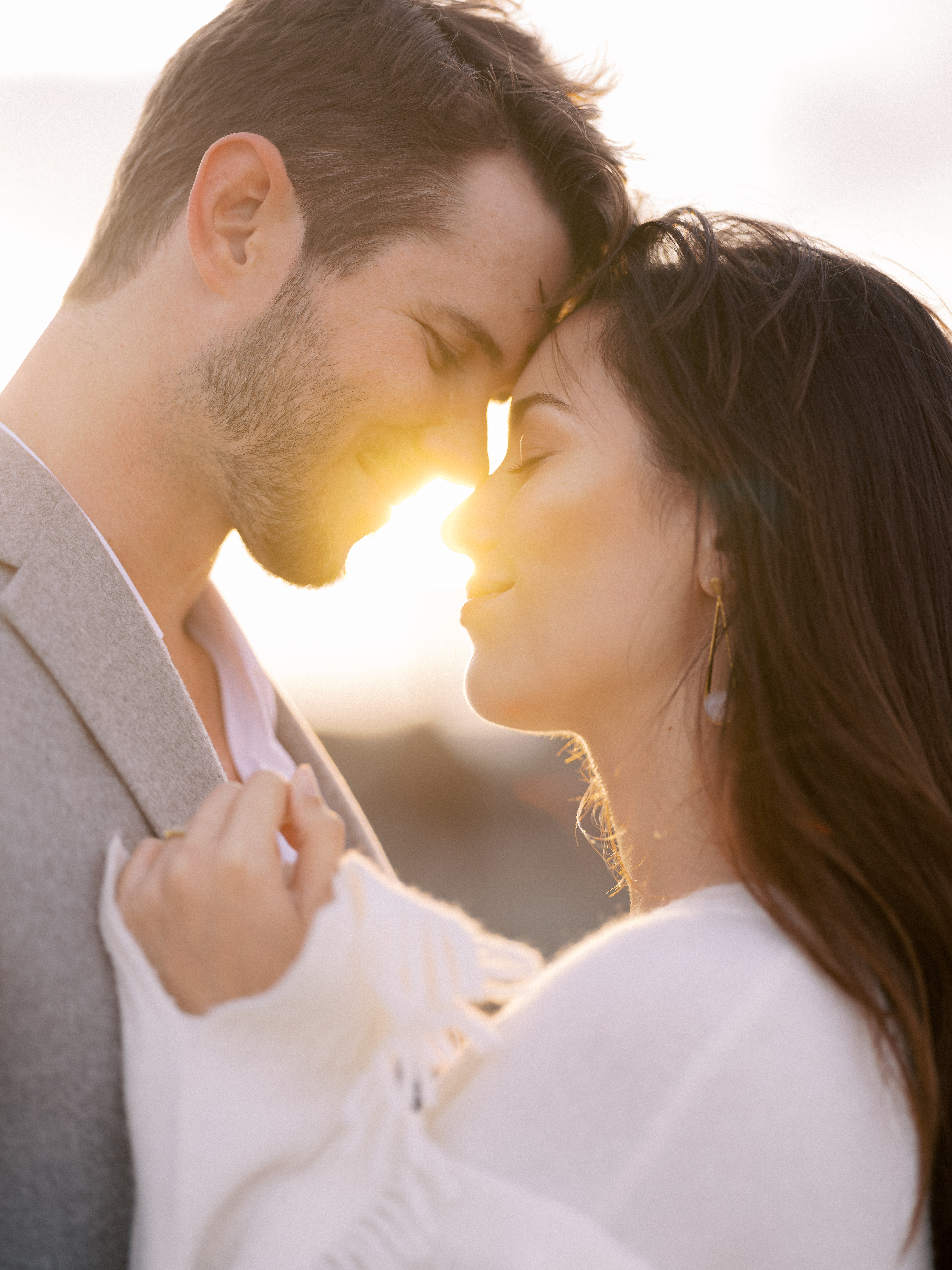
How to re-create it with flash
Step 1
Place the Profoto A1X on a stand behind the model (in the video, Paul is using a Manfrotto Nano Pole stand)
Step 2
Add the Profoto Clic Gel Full CTO on to the Profoto A1X to get a warm light in the background
Step 3
Attach a remote, such as the Profoto Connect, in your camera’s hot shoe to wirelessly connect your camera and flash
Tips
- Change the position of the flash to get the “sunlight” exactly where you want it
- Increase or decrease power if you think it’s too little or too much
Creating blue hour light
The cold, blue light that appears before sunrise in the morning and after sunset in the evening.
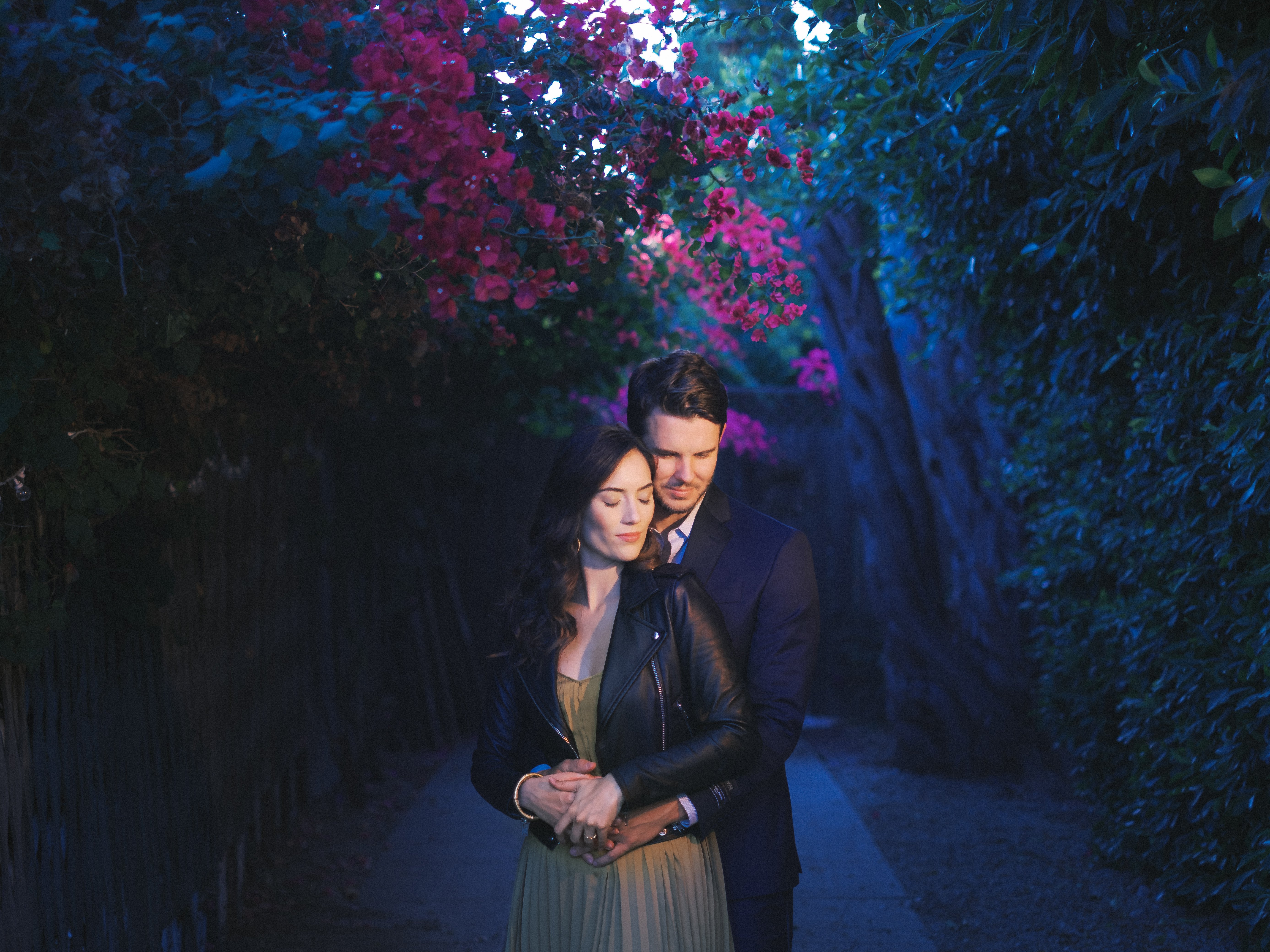
How to re-create it with flash
Step 1
Change the Kelvin setting (color temperature) to below 4000 in your camera to get a cooler background and to match the feeling of blue hour
Step 2
Add a Profoto Clic Gel CTO on your Profoto A1X to get a neutral color in the model’s face
For more tips and tricks on how to use flash, visit Profoto Academy
Hope you enjoyed this quick introduction on how to get started with the Profoto A1X. If you want to see more tips and tricks on how to use flash for different purposes, check out Profoto Academy.